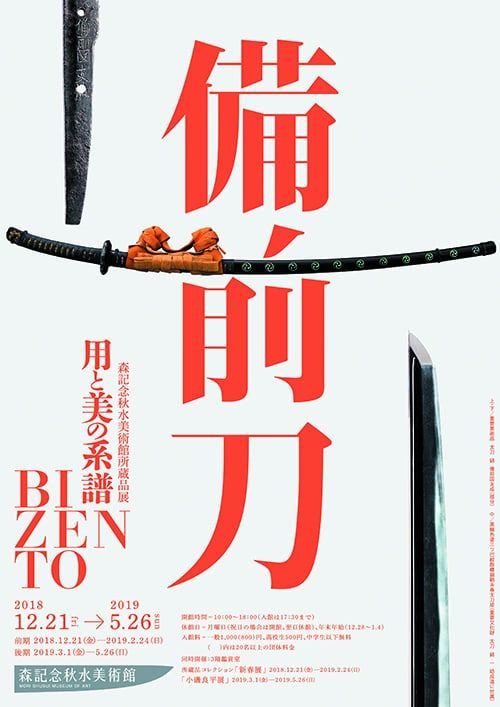Long ago, Kibi Province once spanned the entirety of modern-day Okayama Prefecture, the eastern part of Hiroshima Prefecture, and the western part of Hyogo Prefecture, and since ancient times, the region was known for its iron. During the Nara period (8th c.), Kibi was divided into the four provinces of Bizen, Bitchu, Bingo, and Mimasaka, and Bizen in particular went on to flourish as a center of swordmaking.
From the mid to late Heian period (10th to 12th c.), Japanese swords developed the iconic form they would come to be known for, and Bizen Province produced such swordmakers as Tomonari and Masatsune. Starting around that era, numerous smiths took up residence in the Yoshii River basin in particular, and Bizen became medieval Japan’s largest producer of swords. The Bizen swords that still remain today tell us, through the inscriptions mentioning years on many of them, about the various ups and downs experienced by these smiths and their various schools of swordmaking over some 500 years, making them incredibly valuable as historical research materials.
This exhibition features Bizen swords belonging to the museum’s collection, organized by era and by school to show the changes over time by swordmakers and their work, all displayed so as to best show off their beauty and unique highlights. We hope that visitors will enjoy this opportunity to experience the characteristics of these swords, such as their beautiful jigane and their bright, clear hamon patterns.




 Back
Back